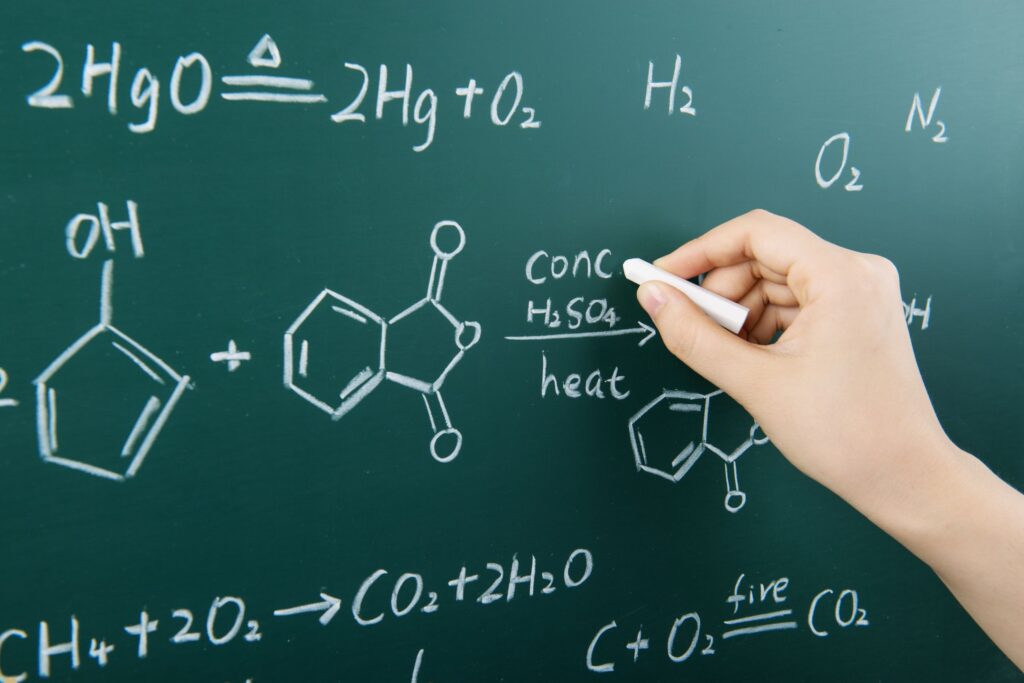
Acids and bases form a critical component of A-Level Chemistry, underpinning many of the principles you’ll encounter in both organic and inorganic branches. Whether you’re tackling titrations, buffer systems, or equilibrium, mastering acids and bases is key to success.
At the start of your learning journey, the challenge lies in grasping definitions, distinguishing strong from weak substances, and working confidently with pH calculations. But don’t worry — this guide breaks down everything you need to know, step by step.
Definitions: Arrhenius, Brønsted-Lowry, and Lewis
Understanding the different definitions of acids and bases provides a strong conceptual foundation. Here are the three key models:
Arrhenius Theory
According to Arrhenius:
- Acid: Produces H⁺ ions in aqueous solution.
- Base: Produces OH⁻ ions in aqueous solution.
This definition works well for simple acid-base reactions but is limited to water-based solutions.
Brønsted-Lowry Theory
This theory expands on Arrhenius:
- Acid: Proton (H⁺) donor.
- Base: Proton acceptor.
This definition applies to a wider range of reactions and includes non-aqueous systems.
Lewis Theory
The most general:
- Acid: Electron pair acceptor.
- Base: Electron pair donor.
This theory encompasses reactions involving covalent bonding and offers a broader chemical perspective. KS3 Science Revision Guide
Strong vs Weak Acids and Bases
A strong acid fully dissociates in water, while a weak acid only partially dissociates.
Examples:
| Type | Acids | Bases |
| Strong | HCl, HNO₃, H₂SO₄ | NaOH, KOH |
| Weak | CH₃COOH, HF | NH₃, CH₃NH₂ |
In calculations and reaction predictions, it’s crucial to know which substances dissociate completely and which do not.

Common Examples of Acids and Bases
Acids:
- Hydrochloric acid (HCl)
- Sulfuric acid (H₂SO₄)
- Nitric acid (HNO₃)
- Ethanoic acid (CH₃COOH)
Bases:
- Sodium hydroxide (NaOH)
- Potassium hydroxide (KOH)
- Ammonia (NH₃)
The pH Scale and pOH Explained
The pH scale ranges from 0 to 14:
- pH < 7: Acidic
- pH = 7: Neutral
- pH > 7: Basic
The formula to calculate pH is: pH = -log[H⁺]
pOH is calculated similarly: pOH = -log[OH⁻] and pH + pOH = 14
Calculating pH – Step-by-Step
For Strong Acids:
Since they fully dissociate:
- 0.1 M HCl → [H⁺] = 0.1 M
- pH = -log(0.1) = 1
For Weak Acids:
Use the acid dissociation constant (Ka): Ka = [H⁺][A⁻]/[HA]
And then calculate [H⁺] to find pH.
This is often solved using the quadratic equation or an approximation if Ka is small.
The Role of Water and the Ionic Product Kw
Water self-ionises: H₂O ⇌ H⁺ + OH⁻
At 25°C: Kw = [H⁺][OH⁻] = 1.0 x 10⁻¹⁴ mol²/dm⁶
Neutralisation Reactions
When an acid reacts with a base: Acid + Base → Salt + Water
Examples:
- HCl + NaOH → NaCl + H₂O
- H₂SO₄ + 2KOH → K₂SO₄ + 2H₂O
Buffer Solutions: What, Why, and How
A buffer resists changes in pH upon addition of small amounts of acid or base.
Acidic Buffers
- Made from a weak acid and its salt (e.g., CH₃COOH and CH₃COONa).
- Maintains pH < 7.
Basic Buffers
- Made from a weak base and its salt (e.g., NH₃ and NH₄Cl).
- Maintains pH > 7.
Buffers are vital in biological and chemical systems.
Conclusion
Understanding acids and bases is fundamental to succeeding in A-Level Chemistry. By mastering the theories, calculations, reactions, and applications, you’ll build a strong foundation that supports your entire chemistry learning journey. Keep practising with examples and titration curves, and you’ll soon feel confident tackling even the trickiest exam questions. Enrol now for Online A level Courses
Frequently Asked Questions (FAQs)
1. What is the difference between a strong and a weak acid?
Strong acids completely dissociate in solution, while weak acids only partially dissociate.
2. How do I choose the correct indicator for titration?
Choose based on the pH range of the equivalence point. For strong acid-strong base, phenolphthalein or methyl orange work well.
3. Why is water considered neutral?
Because [H⁺] = [OH⁻] at 25°C, giving a pH of 7.
4. Can a buffer be made using a strong acid or base?
No, buffers require a weak acid/base and its salt for proper buffering action.
5. How does temperature affect Kw?
As temperature increases, Kw increases, and the pH of pure water decreases slightly.
